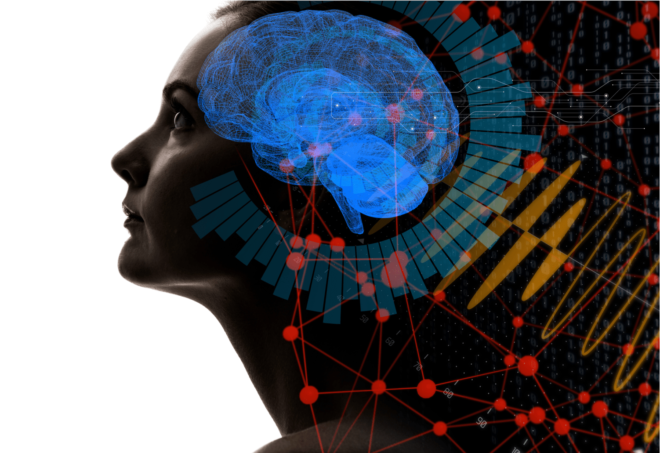EEG has fallen short in its utility in the diagnosis and monitoring of various neurological disorders from ALS and MS to even Epilepsy. Why is this so?
You would think that the EEG would be ubiquitously used in neurology for a great number of applications from diagnosis to monitoring of disease progression. However so far this has been elusive. Why so?
What the EEG could be used for
Many neurological disorders like amyotrophic lateral sclerosis (ALS), multiple sclerosis (MS) and Epilepsy are clinical diagnoses. What this means is that they are diagnosed based on clinical symptom histories rather than an underlying pathophysiology. Essentially there are no definitive tests for these diseases and accurate diagnosis can be a challenge. Often, accurate diagnosis may not be possible until symptoms are far enough along to be obvious. For example, ALS and MS can have very similar symptoms although their disease progressions differ and early on in their genesis symptoms may be very hard to both identify and distinguish from one another. Similarly, epilepsy relies on a primary diagnosis of seizure which is easier to recognize only once they are severe and obvious.
All of these disorders are thought to originate in the cortex. This means that, in theory, if we understood what was going on with the electrical activity, and had the right means to interpret the signal, EEG could be used for
- early detection of disorders
- to help predict and monitor disease progression
- to distinguish accurately between disorders.
- To help determine potential treatment choice
Unfortunately, at the moment it can do none of these things.
Amyotrophic Lateral Sclerosis (ALS)
ALS (also called Lou Gehrig’s disease) is a progressive neurodegenerative disease that is thought to start in the cortex. Called the ‘dying forward’ hypothesis, it postulates that motor neuron degeneration arises from hyperexcitability of corticomotoneuronal tracts that result in transmitter toxicity. This is supported by the lack of pure lower motor neuron phenotypes of ALS, the sparing of muscles with sparse corticoneuronal projections and the frequent presence of cognitive symptoms and personality changes.
This cortical hyperexcitability is typically assessed with paired pulse transcranial magnetic stimulation (TMS) of the cortex. Further some studies suggest that the hyperexcitability is specifically due to intracortical interneuron hyperexcitability. Altogether, this suggests that cortical physiology and therefore EEG should be able to provide a pretty clear view of the onset and progression and ALS. However so far EEG studies are few and while promising, are far from conclusive. Some studies have shown a decrease in alpha power, but alpha power varies widely across the population and decreases under a wide range of paradigms. Others have found increased spectral coherence between regions. However, differences while significant at a group level are not sufficient to be discriminatory with reasonable accuracy.
The question is then what metric of the EEG may be indicative of cortical hypexcitability? Identification of novel metrics that provide a view into this aspect of cortical behavior may be the key to finding the utility of EEG in the diagnosis and monitoring of ALS.
Multiple Sclerosis (MS)
Multiple sclerosis (MS) while similar in symptoms early in its progression differs from ALS in many ways. Its etiology is thought to be autoimmune in nature resulting in demyelination and brain atrophy. In contrast to ALS, symptoms do not always progress continuously and may remain unchanged or dormant for periods of time. It is also associated more significantly with mental health challenges and cognitive decline relative to ALS.
From the perspective of cortical physiology, fMRI studies have suggested that MS is associated with reduced connectivity, which may be opposite to ALS. However, thus far, cortical physiology in MS patients is not well studied using EEG. Some studies have shown that ERPS during a visual oddball task could predict cognitive functioning and information processing speed in both MS patients and healthy controls. However, this is not specific to the disease. Others have shown higher mean phase coherence in the posterior regions of the brain and lower phase coherence in the anterior regions of MS patients compared to healthy controls.
Altogether, little is known about resting state EEG in MS and such understanding may be more difficult because of the large number of mental and cognitive factors that typically accompany MS. However, altogether, while specific patterns of decline may vary, novel global metrics of resting state connectivity may provide substantial insight into the diagnosis and progression of the disease.
Epilepsy
Epilepsy is generally diagnosed as seizures with no other known cause. This is significant since seizures commonly occur in patients with both ALS and MS. Here EEG is used as a first line diagnostic tool with some success. However, it is nonetheless fraught with challenges that are outlined in this related post.
The Fundamental Challenge of Seizure Detection in the EEG
Because of all the technical challenges that still plague seizure detection and the consequent subjectivity involved, it is estimated that epilepsy is significantly over-diagnosed and seizure monitoring and prediction are still open challenges.
Making better use of EEG
Altogether, all evidence points to the potential for EEG to be used much more effectively in the diagnosis and monitoring of these neurological disorders. What is needed large clinical datasets (like the TUH dataset outlined here, for example) and more importantly, some creativity in identifying novel metrics in the EEG signal.
References
[1] van den Bos et al., Pathophysiology and Diagnosis of ALS: Insights from Advances in Neurophysiological Techniques, Int J Mol Sci. 2019 Jun; 20(11): 2818.
[2] Naserroleslami et al. Characteristic Increases in EEG Connectivity Correlate With Changes of Structural MRI in Amyotrophic Lateral Sclerosis Cereb Cortex. 2019 Jan 1;29(1):27-41.
[3] Zipser et al., Cortical Excitability and Interhemispheric Connectivity in Early Relapsing-Remitting Multiple Sclerosis Studied With TMS-EEG, Front Neurosci. 2018 Jun 8;12:393.


You know that Somatosensory ERPs are used in ALS diagnosis? Are you aware of the large field of Evoked–Potentials. Why even bring up Alpha ?
Had epilepsy wohem 1was 21but haven’t had any problems